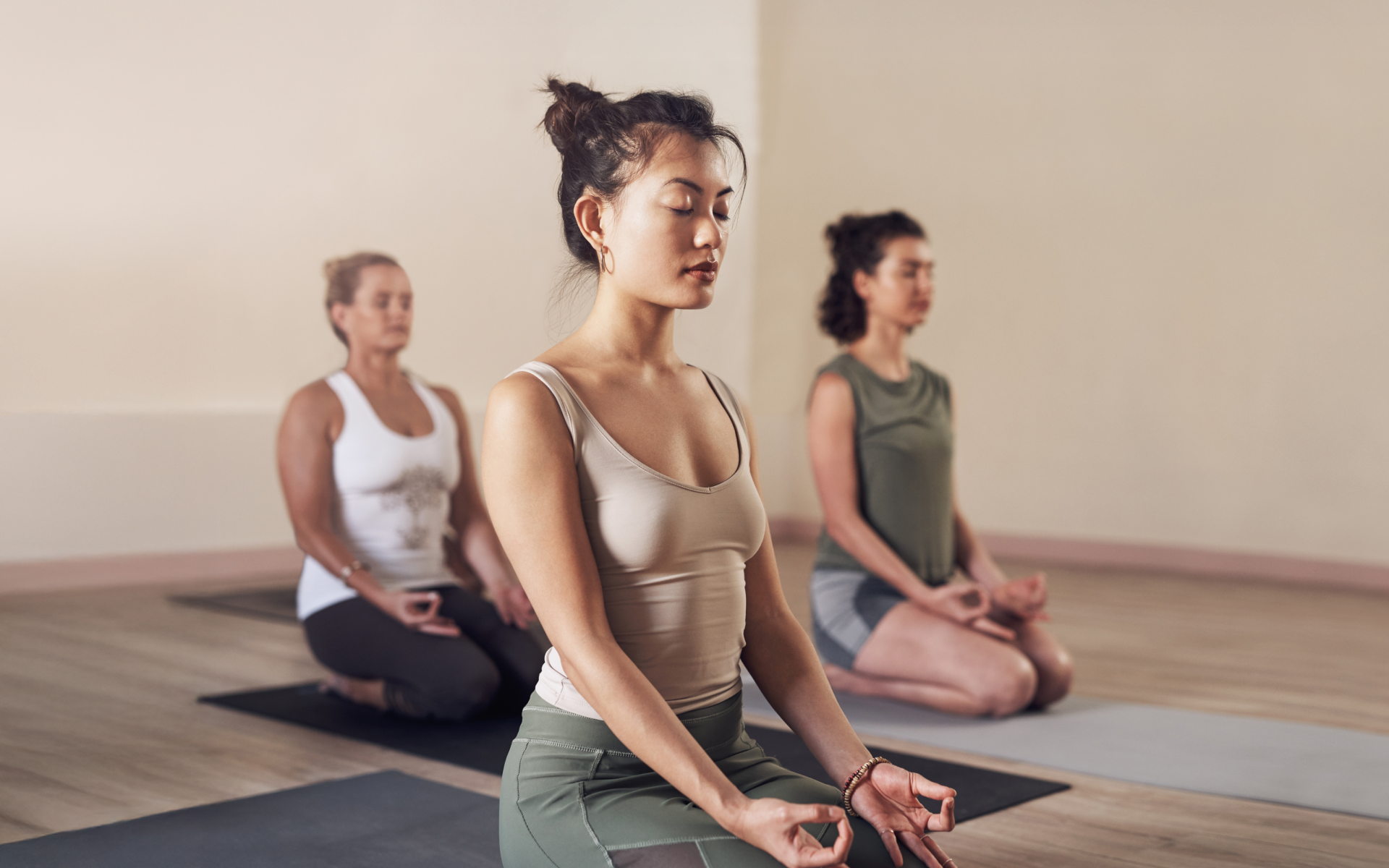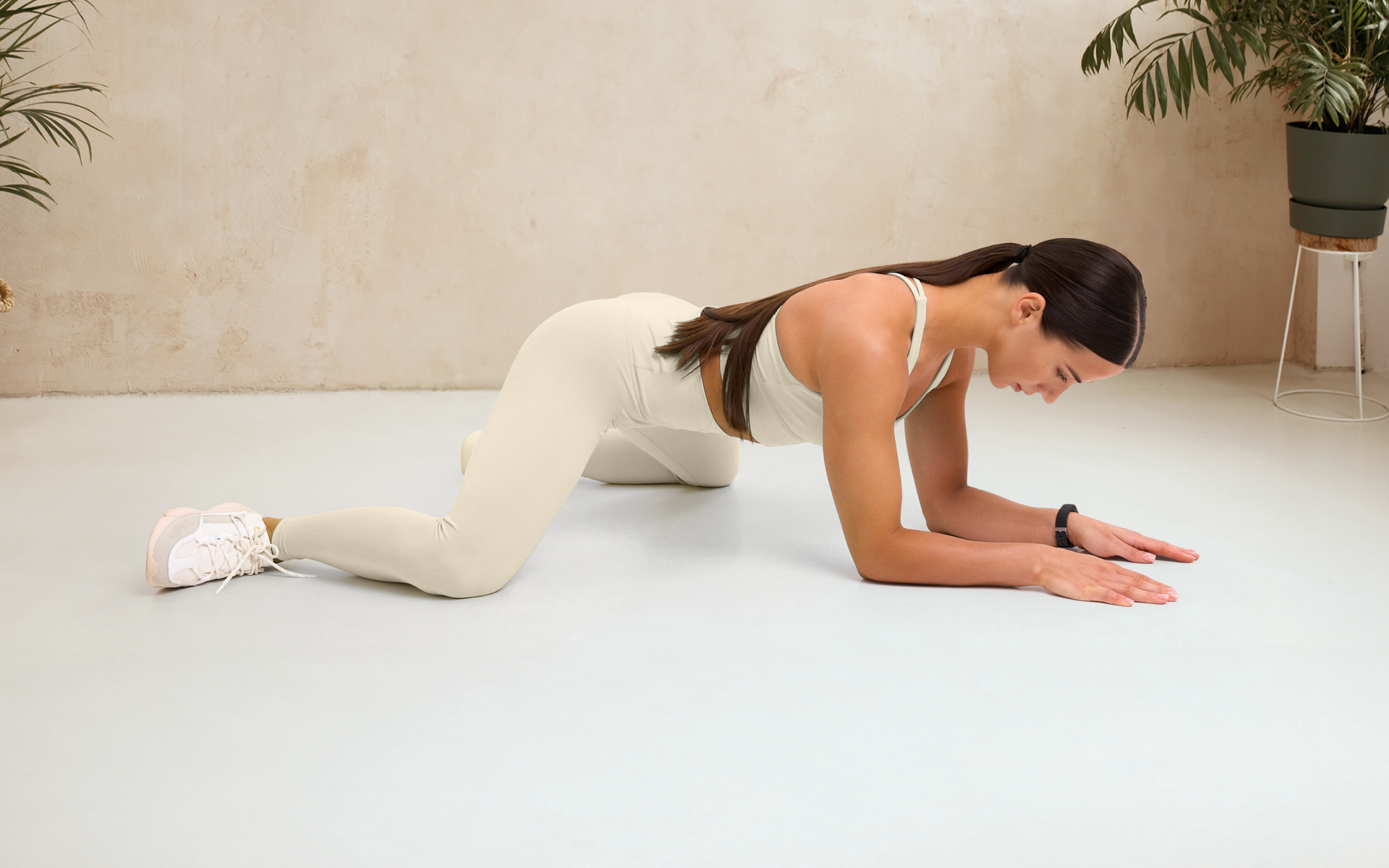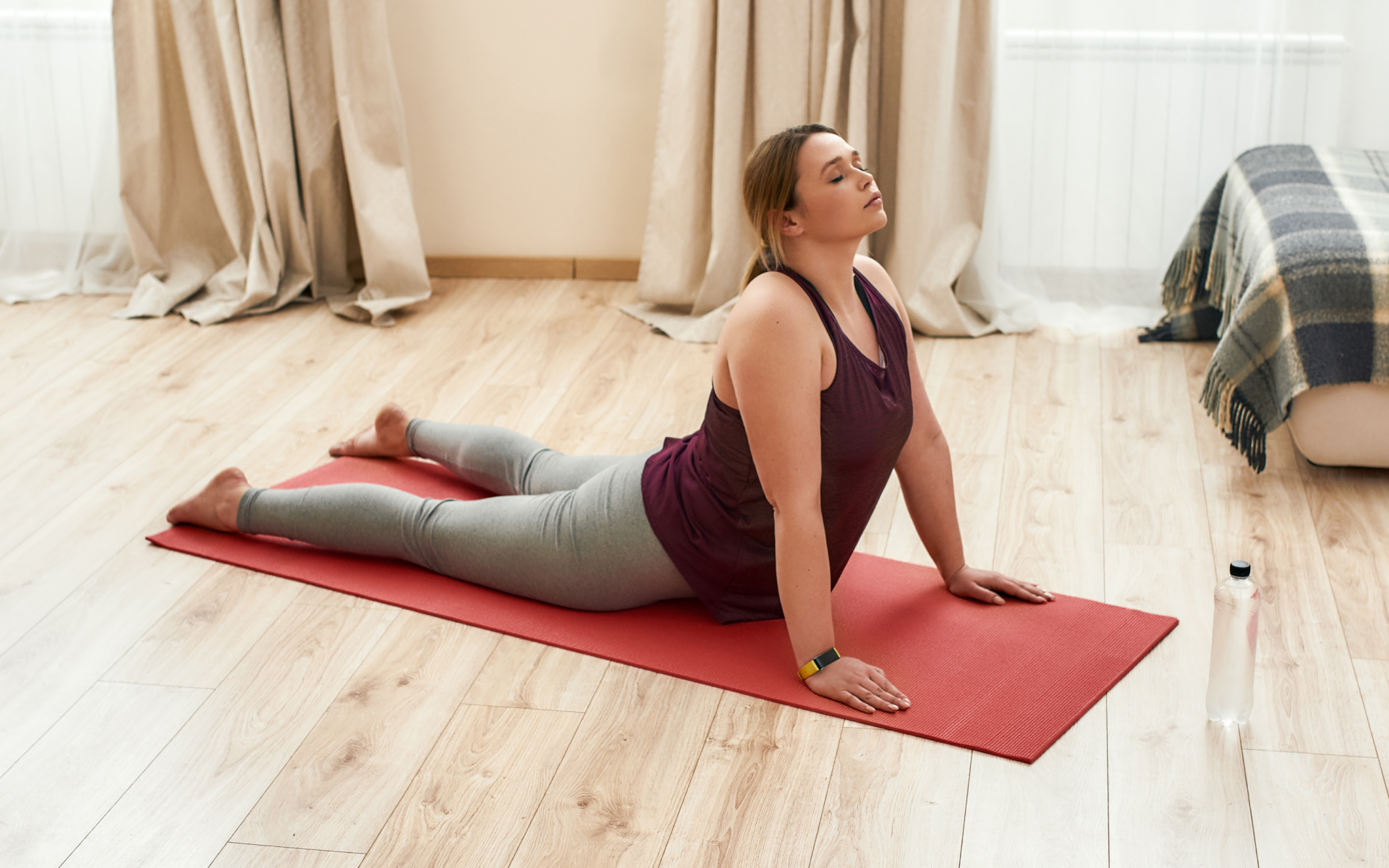Yoga has been a well-known practice across many cultures for several centuries. Most people view yoga as a spiritual practice, but many don’t realize that there’s a bit of science behind this discipline. Yoga focuses on bringing calmness to the mind and body by forming a strong mind-body connection. While different cultures may have their own approaches to yoga, it’s all done with the same purpose in mind (1).
One of the major benefits of yoga is that there isn’t necessarily one right way to do it. Nowadays, there are a variety of instructors who have their own approaches to the practice and people tend to enjoy the benefits of yoga regardless of which approach they take. That being said, the somatic approach to yoga has its own specific benefits and can truly change your day-to-day experience if you properly incorporate it into your life.
Yoga is commonly seen as an alternative medicine practice and is even sometimes recommended to different age groups as a way to improve their health. When it’s used in conjunction with conventional medicine, the physical and psychological benefits of yoga can be impressive (2).
What Is Somatic Yoga?
When referring to ‘somatic’ work, we’re typically referring to bodywork or any type of practice that involves body-mind connections and hands-on work or movement of the body. When referring to somatic yoga, we’re talking about a type of yoga that emphasizes moving the body in a way that focuses on mind-body connection but also moving the body in a way that promotes the release of trauma and tension the body may be holding onto (3).
When you participate in somatic yoga, you focus on voluntary relaxation of the muscles and when these releases take place, it helps to lower the body’s cortisol levels (4). Cortisol is best known as the stress hormone, and high levels of it in the body can cause inflammation, sleep disturbances, and other physical and mental side effects. By incorporating somatic yoga practices into your wellness routine, you’re enhancing body awareness and promoting the release of tension, which has a multitude of health benefits.
BetterMe: Meditation & Sleep app can help you transmute stress into serenity, pull you up from the doldrums, free your mind from the cares and worries of the world, quell racing thoughts and infuse you with tranquility! Start using it now and change your life !
What Are the Benefits of Somatic Yoga?
There are many benefits of somatic yoga and the more time you spend doing it, the more benefits you’re likely to experience. While there are physical health benefits, somatic yoga is also well-known for the mental health benefits it provides.
Can Increase Movement Efficiency and Flexibility
Yoga places a lot of focus on slow and controlled movements and tends to incorporate breathwork and mental focus into the movement patterns. Unlike traditional exercise and movement, yoga focuses less on building strength and endurance and more on the stretching of muscles and the release of tension from within them.
As somatic yoga movement is so subtle, it can lengthen muscles and release tension from your joints, which can ultimately lead to the ability to move more efficiently and with more flexibility than you may have had before you incorporated somatic yoga into your routine (5). You may also experience increased balance (6).
May Help Reduce Chronic Pain
Approximately 20% of people worldwide suffer from chronic pain, which can be both physically and mentally debilitating. Chronic pain can impact your ability to sleep, work, travel, and enjoy activities with friends and family. It can also prevent you from engaging in physical activity, which can have detrimental effects on your physical health. One of the worst things about chronic pain is that it can be challenging to come up with a successful pain management plan.
Luckily, including somatic practices such as yoga in your pain management plan can have a profound impact. This is because somatic yoga helps you connect with your body by improving self-awareness and helping create a better understanding of the sensations you experience, which can reduce your perception of pain (6).
By gaining a better understanding of how your body works and developing a strong mind-body connection, the way you experience pain can be altered and ultimately present itself in less intense ways. Somatic yoga also helps release tension through the body, which is also known to be a source of discomfort.
Promotes Relaxation, Which Can Reduce Stress Levels
The practice of yoga has been proven to reduce distress. The focus somatic yoga places on breathing while relaxing your muscles has been proven to be effective for improving your mental state. This practice can promote feelings of well-being, ultimately bringing your body into a calm mental state (7).
Ultimately, when you participate in somatic yoga, you’re allowing yourself to focus on how your mind and body work together and taking the time to release any built-up tension you may be carrying in your body. Allowing this release of tension can trigger a decrease in cortisol levels, which can be responsible for feelings of stress and also negatively impact sleep and eating behavior (4).
Encourages the Healing of Trauma
Trauma is something many people in society have experienced and are holding onto, even if they’re not conscious of it. Luckily, practices such as somatic yoga can help initiate the healing process of unresolved trauma. Participating in yoga has been proven to reduce autonomic sympathetic nervous system responses (think stress response), which are often triggered when associations to trauma are presented (8).
As yoga can help reduce your stress response when triggered by a memory or feeling related to past trauma, this can lead to less need to engage in unhealthy coping behaviors (8). Unhealthy coping behaviors are one of the biggest struggles people have in relation to unresolved trauma. When you can engage in healthy coping responses rather than unhealthy ones, this encourages the healing process and can improve your overall well-being and promote emotional healing.
Read more: Somatic Healing Techniques: A Holistic Approach to Physical and Emotional Recovery
What Is the Purpose of Somatic Yoga?
There are many purposes for practicing somatic yoga. Most people who choose to do somatic yoga hope to experience some type of benefits from it. They may be doing somatic yoga for weight loss, trauma healing, relaxation, mitigation of chronic pain, or for many other reasons. Somatic exercises, stretching, movement therapy, and yoga can all help improve your mental and physical health when done correctly and regularly.
When doing somatic yoga, the purpose is to truly focus on the movements and connect how your body feels with what your mind is experiencing. Establishing this connection may help you increase your body awareness and improve things such as your sleep routine, flexibility, and emotional awareness.
Traditional vs Somatic Yoga
Traditional and somatic yoga share many of the same benefits and for the most part, all yoga has some somatic benefits. Both types of yoga are typically done by bringing the body into a calming state and involve focused movements. Each style of yoga has its own distinct approach, so while they share some of the same benefits, they do have their differences.
Traditional yoga is more focused on practices that evolved from ancient India and is quite holistic. It typically integrates various postures, a specific type of breath work, meditation, and certain ethical guidelines. Ultimately, the main goal of this type of yoga is to clear your mind, grow on a spiritual level, and improve your physical health.
On the other hand, somatic yoga is more modern and focuses on how the body moves and how you experience the body from within. During somatic yoga routines, the goal is to make a strong mind-body connection and be aware of any sensations you may experience and the way your body moves. The ultimate goal is to release tension and improve the way your body moves (9).
Which Type of Yoga Is Best for Weight Loss?
Doing yoga isn’t typically the top priority when it comes to weight loss, but if you want to try somatic yoga for weight loss purposes, it may be beneficial. Doing somatic yoga is unlikely to burn a lot of calories or help you build a lot of muscle, but it can improve your overall well-being.
When you sleep better and are less stressed (both of which are potential benefits of somatic yoga), this will likely have a positive impact on your physical health (10). If you’re well-rested and not stressed, then chances are that you will be less likely to overeat and more likely to engage in physical activity, which can ultimately help with weight loss.
Whether you want to learn how to exit the spiral of self-harming behavior, overcome anxiety, cure insomnia or simply give yourself the time and space to bliss out and soak up the moment of complete peace and quiet – BetterMe: Meditation & Sleep app is exactly the tool for that ! If you don’t take care of number one, who will?
What Are Some Somatic Yoga Poses?
Somatic yoga poses tend to focus on movements that are gentle in nature and involve being mindful and aware of the sensations your body is experiencing.
Examples of somatic yoga poses include:
- Child’s pose
- Leg slides
- Butterfly hug
- Supine twist
- Pigeon pose
- Happy baby pose
- Cat-cow
- Bridge pose
- Cobra pose
- Seated neck rolls
Read more: Somatic Dance: Liberation through Expression and Movement
FAQs
Is somatic yoga worth it?
Yes. If you want to improve your mental and physical well-being, then trying somatic yoga is free, easy, and unlikely to have any negative consequences.
Can you lose weight with somatic yoga?
Doing somatic yoga can positively impact your mental and physical well-being, which can cause a decrease in unhealthy behaviors and an increase in beneficial behaviors.
Is somatic yoga the same as restorative yoga?
No. They share some of the same ideas and movements, but restorative yoga is focused on promoting rest and relaxation while somatic yoga is more focused on injury recovery and an improved mental state.
What is the most relaxing yoga called?
Different people find different types of yoga to be the most relaxing. Many people feel that restorative yoga is the most relaxing.
The Bottom Line
Somatic yoga can have many benefits when it comes to your physical and mental wellness. Due to its ability to help release tension and encourage a stronger mind-body connection, somatic yoga can improve many aspects of your life. If you struggle with mobility and chronic pain then doing somatic yoga is a great way to connect with your body and better understand what makes it feel good and what things cause your body discomfort.
DISCLAIMER:
This article is intended for general informational purposes only and does not serve to address individual circumstances. It is not a substitute for professional advice or help and should not be relied on for making any kind of decision-making. Any action taken as a direct or indirect result of the information in this article is entirely at your own risk and is your sole responsibility.
BetterMe, its content staff, and its medical advisors accept no responsibility for inaccuracies, errors, misstatements, inconsistencies, or omissions and specifically disclaim any liability, loss or risk, personal, professional or otherwise, which may be incurred as a consequence, directly or indirectly, of the use and/or application of any content.
You should always seek the advice of your physician or other qualified health provider with any questions you may have regarding a medical condition or your specific situation. Never disregard professional medical advice or delay seeking it because of BetterMe content. If you suspect or think you may have a medical emergency, call your doctor.
SOURCES:
- Basavaraddi, I. V. (2015). Yoga: Its origin, history and development. Public Diplomacy, 1, 1-5.
- Bhardwaj, S., & Rathee, N. K. (2018). EXPLORING PSYCHO-SOMATIC IMPLICATIONS OF YOGA PRACTICES–A STRATEGIC INQUIRY. European Journal of Physical Education and Sport Science.
- Eddy, M. (2002). Somatic practices and dance: Global influences. Dance Research Journal, 34(2), 46-62.
- Galantino, M. L., Tiger, R., Brooks, J., Jang, S., & Wilson, K. (2019). Impact of somatic yoga and meditation on fall risk, function, and quality of life for chemotherapy-induced peripheral neuropathy syndrome in cancer survivors. Integrative cancer therapies, 18, 1534735419850627.
- Polsgrove, M. J., Eggleston, B. M., & Lockyer, R. J. (2016). Impact of 10 weeks of yoga practice on flexibility and balance of college athletes. International journal of yoga, 9(1), 27-34.
- Meehan, E., & Carter, B. (2021). Moving with pain: what principles from somatic practices can offer to people living with chronic pain. Frontiers in Psychology, 11, 620381.
- Telles, S., Singh, N., Yadav, A., & Balkrishna, A. (2012). Effect of yoga on different aspects of mental health. Indian J Physiol Pharmacol, 56(3), 245-54.
- Gulden, A. W., & Jennings, L. (2016). How yoga helps heal interpersonal trauma: Perspectives and themes from 11 interpersonal trauma survivors. International journal of yoga therapy, 26(1), 21-31.
- Schmitt, J. S. (2023). Somatic Practice in Yoga Therapy: Explorations of body, movement, mind, and self. Jessica Kingsley Publishers.
- Bhardwaj, P. R., & Bhardwaj, A. K. (2015). Therapeutic applications of yoga for weight reduction in obese population: an evidence-based overview. Online Journal of Multidisciplinary Research, 1(1), 1-5.










